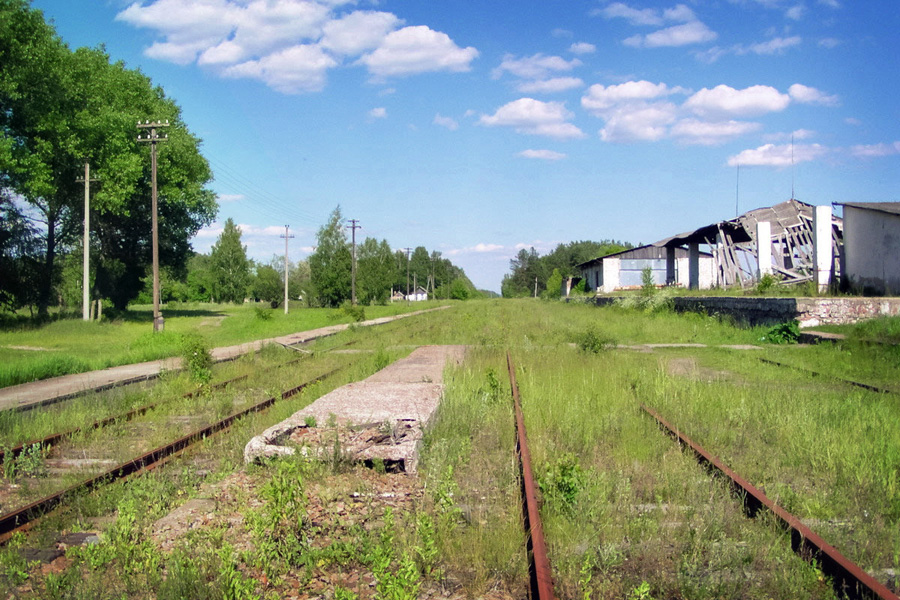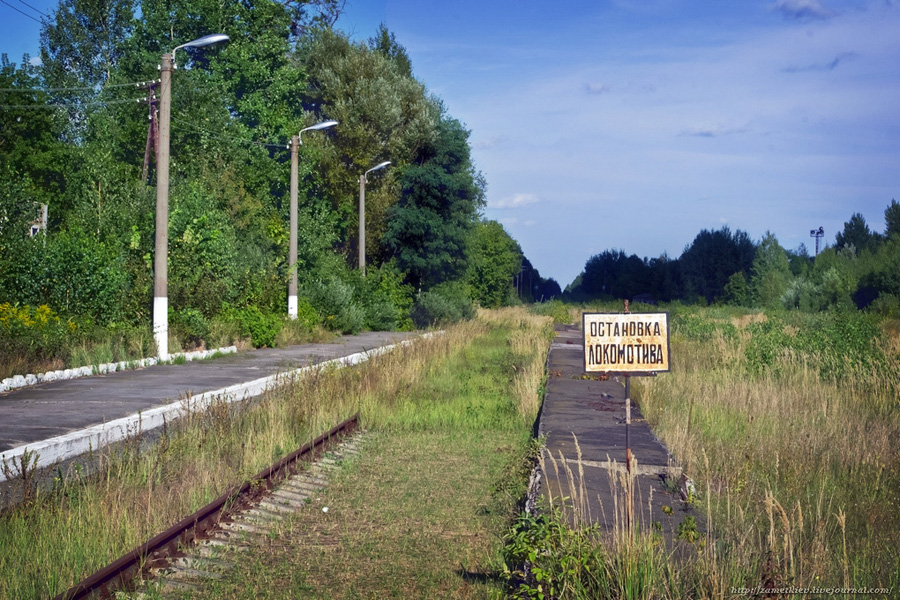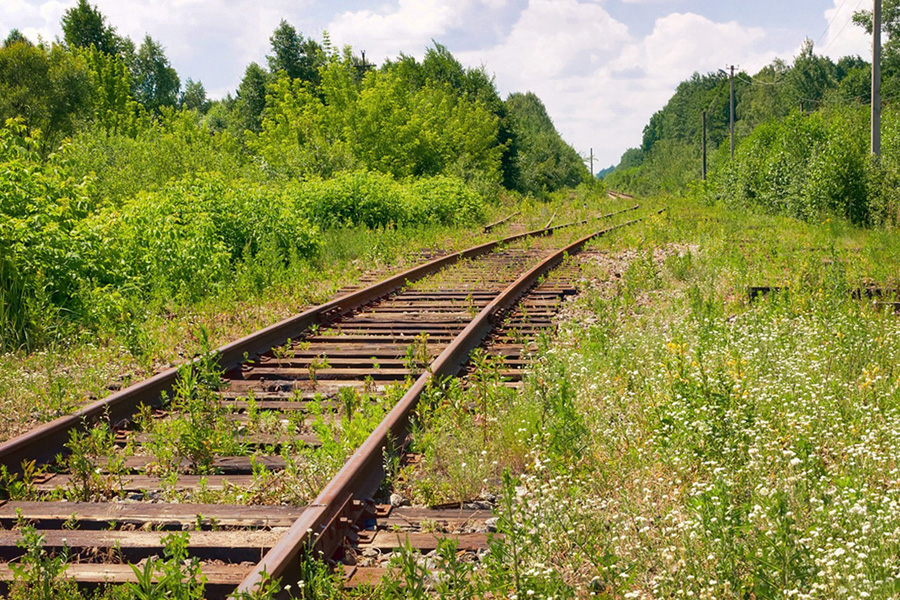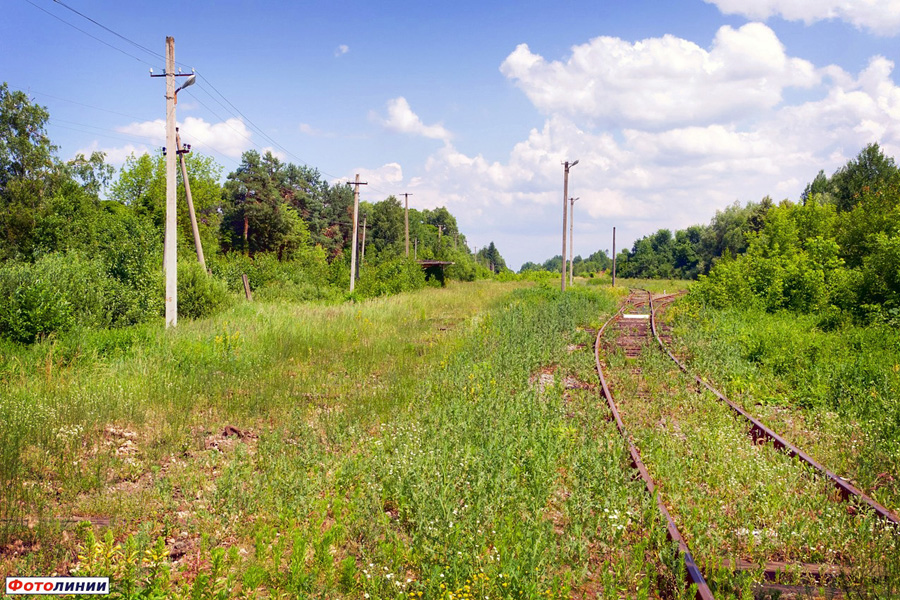Abandoned: The Radioactive Railroad
After the Chornobyl disaster, the Ovruch to Chernihiv line was split into pieces. The eastern portion of the line, closest to Chernihiv, had lower levels of contamination and remains active. To this day, regular trains operate from Chernihiv to Iolcha, which is just over the Dneiper River and in the territory of Belarus. A small railyard was constructed along with the new city named Slavutych, which was built for the workers of the Chornobyl plant. Today, special trains operate from Slavutych to the plant station Semikhody, making no stops, and are only for plant employees. All of the stations that were east of Semikhody, but west of Iolcha were closed and abandoned.
The length of track located in the Chornobyl Exclusion Zone - from Yaniv to Vilcha - was put under the jurisdiction of the Chornobyl plant. A few working diesel locomotives were posted to Yaniv, and operate within this zone whenever needed. It has, however, been several years since a train has moved any distance west of Yaniv, and trees have begun to grow within the tracks.
Vilcha is a checkpoint into the 30 kilometer Exclusion Zone, and its station itself was technically still open until 2013, though there was no passenger service. The 44 kilometers of track east of Vilcha, all the way to Ovruch, are technically still in service, but are essentially abandoned. Realistically speaking, the first 85 kilometers of track are abandoned, and the only service they see are the illegal explorers that sneak into the zone and follow the tracks to Pripyat.
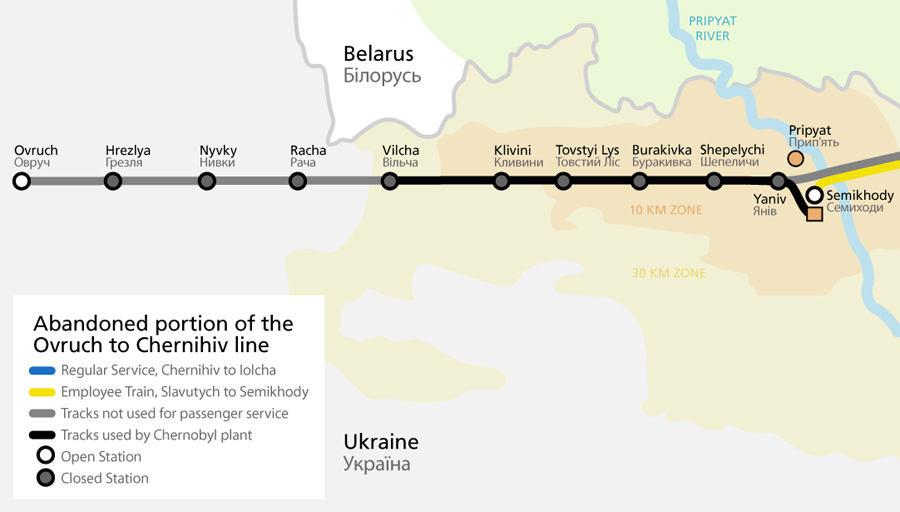
Map showing the abandoned portion of the line. To view the full map of the line
click here.
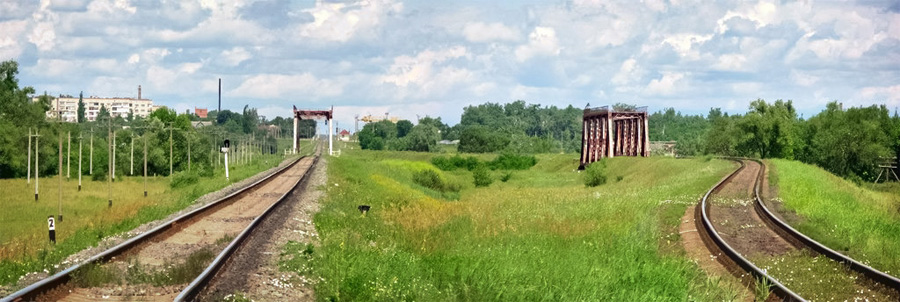
Though the city of Ovruch was the terminus of the rail line through the Chornobyl zone, trains haven't completely disappeared here. Service continues to Vystupovychi and Berezhest in the north, Vozlyakove in the west, and Korosten in the south. The eastern track is technically in service all the way to Vilcha, on the border of the Exclusion Zone, but passenger service was cancelled after 1986. [ Photo credit:
Leonid Andronov /
Panoramio ]
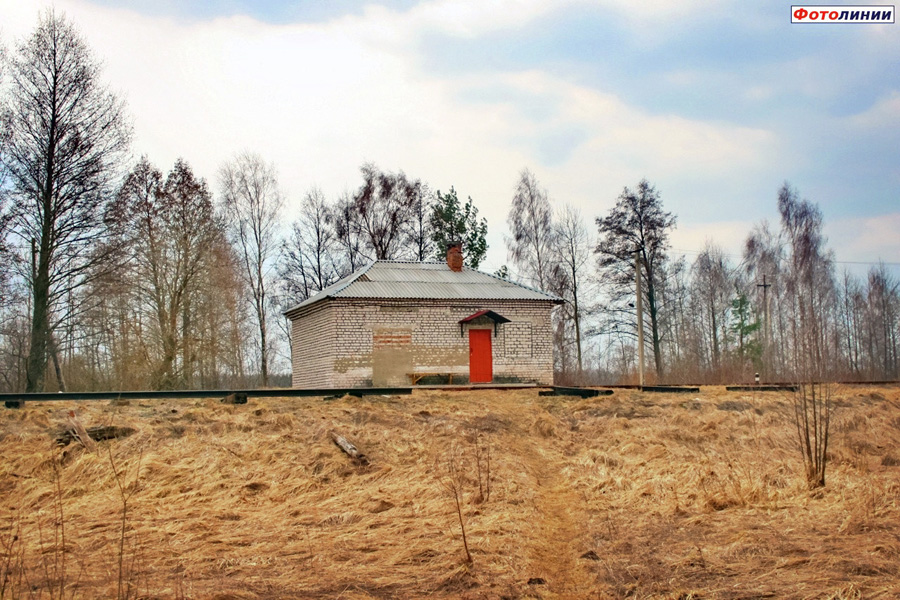
The former passenger station at Hrezlya. Hrezlya is technically outside today's boundaries of the exclusion zone, but in 1986 its inhabitants were evacuated due to the contamination. [ Photo credit:
Ivan Voronin /
Railwayz ]
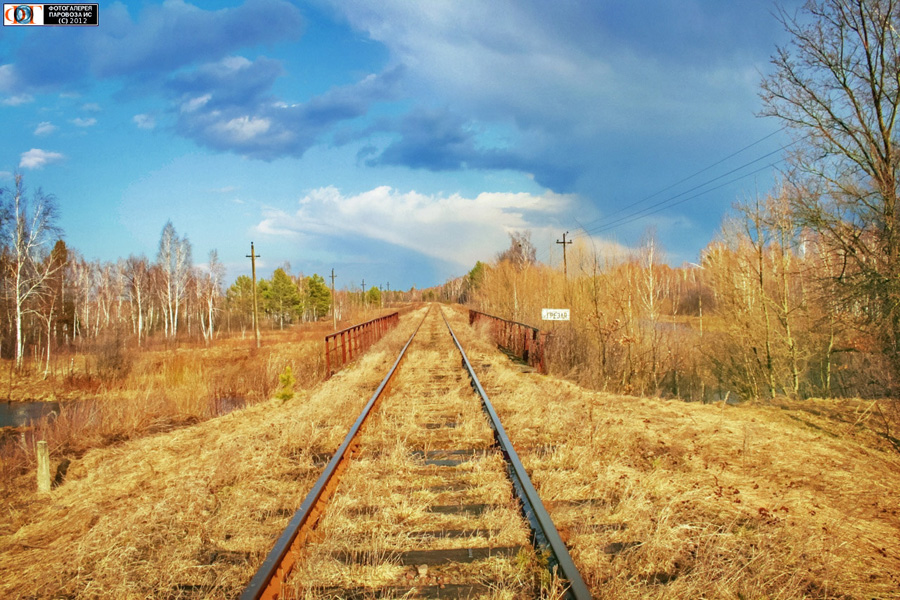
Crossing over the river Hrezlya, the namesake of the station. [ Photo credit:
Ivan Voronin /
Parovoz ]
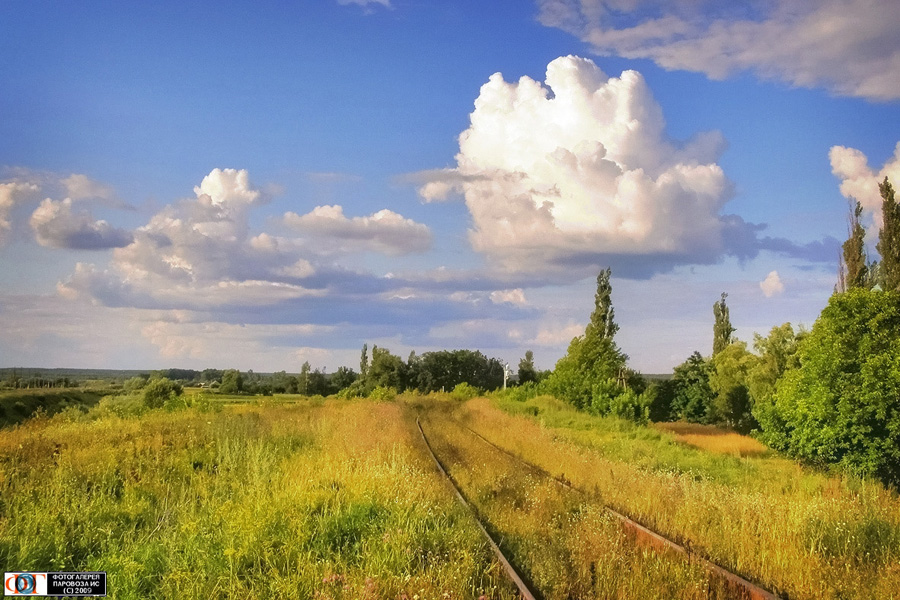
Vilcha serves as a checkpoint heading forward into the Exclusion Zone. "Clean" locomotives will go no further than Vilcha station. [ Photo credit:
Andrey /
Parovoz ]
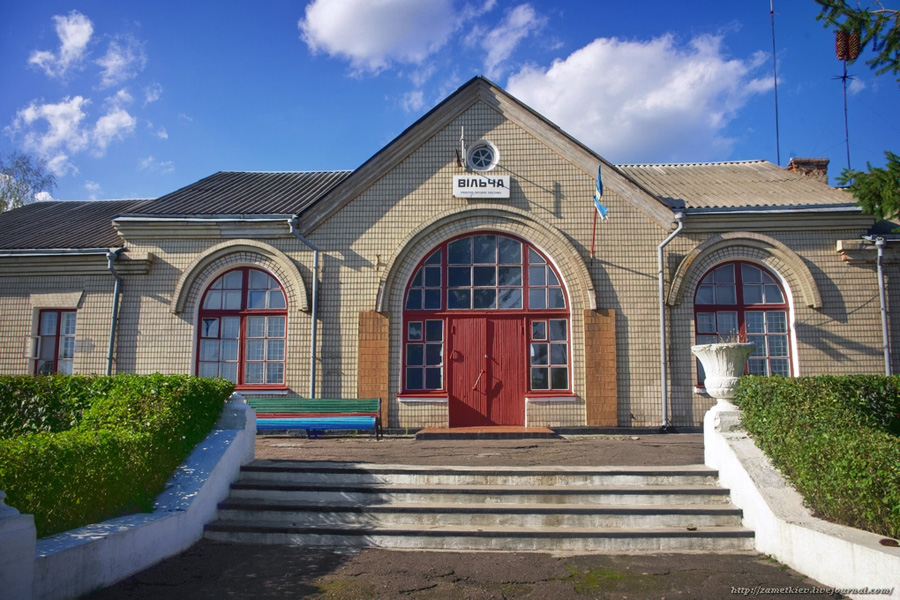
Vilcha station is still open, but there is no passenger service from here. Vilcha's inhabitants were evacuated in 1986, though some resettlers have moved back. [ Photo credit:
Kirill Vozrozhdenko /
Livejournal ]
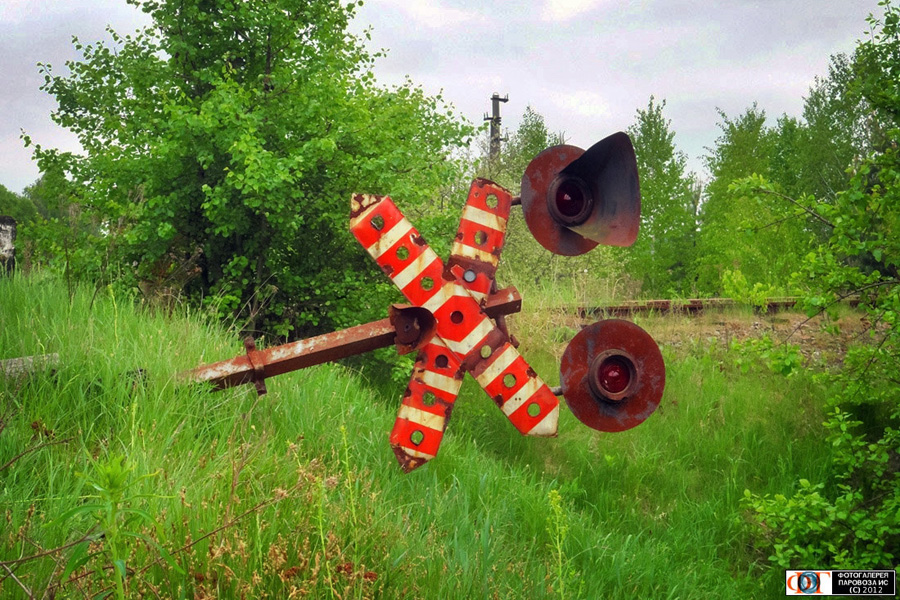
Beyond Vilcha an abandoned set of crossing lights lies abandoned. [ Photo credit:
Igor /
Parovoz ]
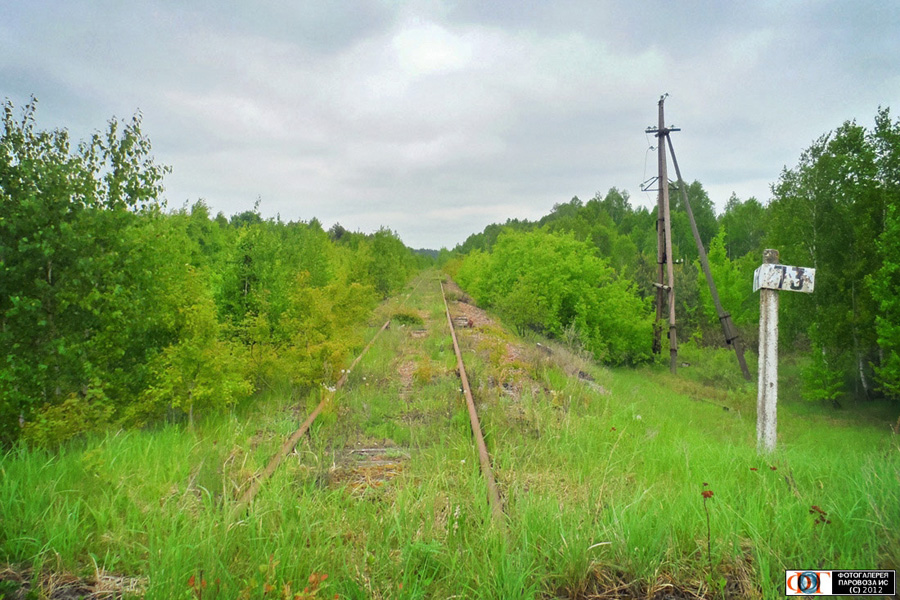
Milepost 73 on the abandoned portion of the railroad. [ Photo credit:
Igor /
Parovoz ]
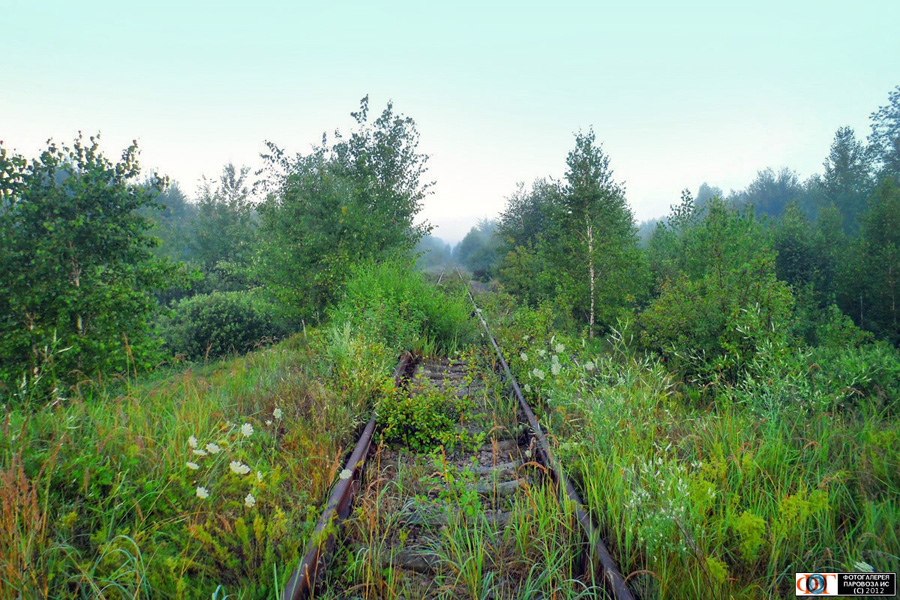
Grasses and plants are slowly reclaiming the railroad's right of way, close to the village of Tovstyi Lis, abandoned after the 1986 disaster. The village name literally translates to "Thick Forest" in English. 773 inhabitants were evacuated in 1986. [ Photo credit:
Igor /
Parovoz ]
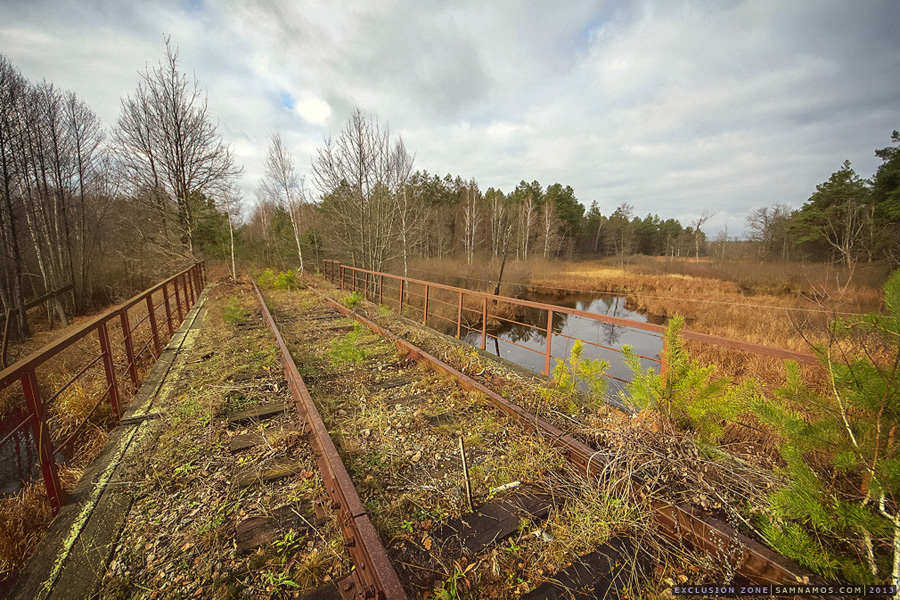
A railroad brige along the line. Many small bridges like this were needed to cover the various rivers and swamps along the route. [ Photo credit:
Sam Namos /
Livejournal ]
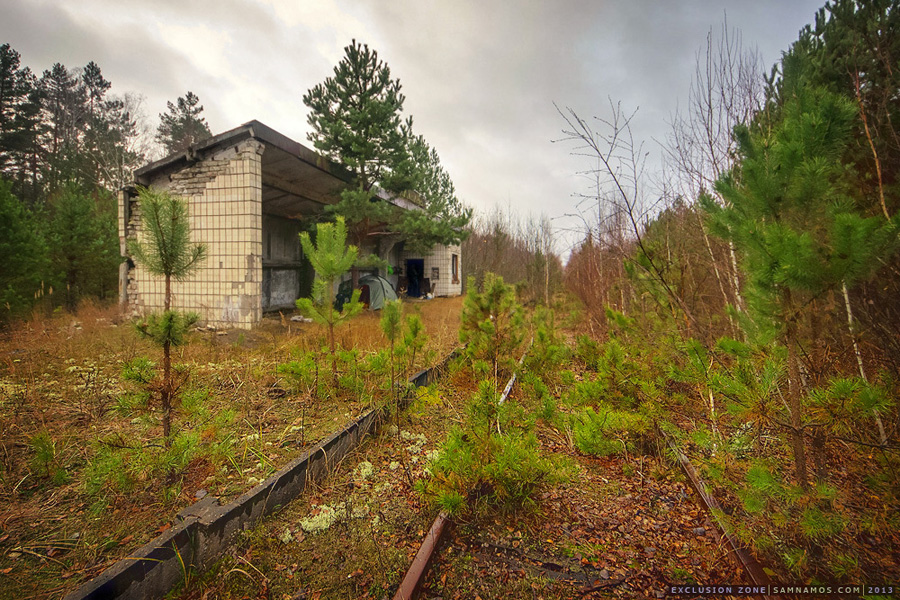
An abandoned shelter at Klivini. Klivini was a very small village, containing only 175 inhabitants when it was evacuated in 1986. [ Photo credit:
Sam Namos /
Livejournal ]
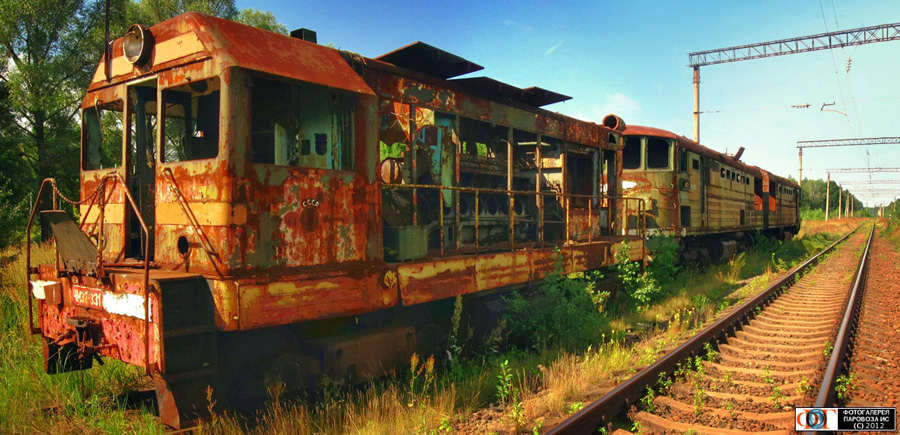
Beyond the Chornobyl plant, in the territory of Belarus are several abandoned stations and railroad equipment. These diesel locomotives have been left to rot at the abandoned Posudovo station. The rail line visible on the right is still active, used to take workers from Slavutych to the Chornobyl plant. [ Photo credit:
Igor /
Parovoz ]




